Finding The Roots Of Religion In Human Prehistory

Deborah Barsky
07-01-2024 ~ In a world so profoundly transformed by science and technology, it seems reasonable to ask: Why do religions still exist?
A glance at recorded history shows us that humans have “always” felt a need to explain phenomena perceived to exist beyond our comprehension. Today, we turn to science to seek answers to our questions about the universe. But in the past, preliterate people developed spirituality to deal with their deepest metaphysical queries.
But when exactly did this conceptual revelation evolve and why did it take root so strongly?
In all regions of the world where writing has evolved, we find documents that corroborate humanity’s long history of creating stories to fill in the gaps, defining the limits of our understanding. In many cases, such stories provide deeply symbolic narratives intended to unite people and help them deal with themes that are difficult to explain, like the emergence of life and the paradoxes surrounding the inevitability and permanence of death.
In many parts of the world, uncannily similar cosmological stories appeared soon after the founding of the first urbanized civilizations (i.e., creation myths) These stories serve to address metaphysical issues, and often (anthropocentrically) provide anecdotal accounts to explain how humans fit into the overall scheme of things. Some stories evolved into myths and were steeped in moral reckonings that served to model and control individual conduct in response to the growing population density, which followed the establishment of production-consumption economies.
Cultural convergence is, however, not just commonly observed in creation myths. The Acheulian techno-behavioral revolution; Upper Paleolithic blade technologies; Holocene farming and megalithic structures; and the invention of writing are all examples of landmark techno-social developments that occurred in similar timeframes in vastly different areas of the globe where cultural transmission through direct contact was unlikely to have occurred.
Before science, our ancestors dealt with the unknown by inventing stories that they incorporated into their lives as reasonable replacements for truth. Even though they shared a lack of scientific grounding, some of these stories were passed on over the centuries and eventually became enduring religious beliefs that continue to be embraced by many people. Read more
The Mystery Of The Missing Apes Who Came Before Humans
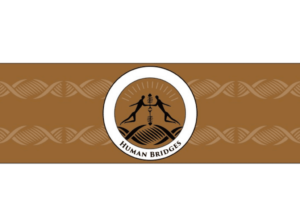 06-29-2024 ~ The fossil record of our ape ancestors in Africa is almost nonexistent for a period of about 8 or 9 million years.
06-29-2024 ~ The fossil record of our ape ancestors in Africa is almost nonexistent for a period of about 8 or 9 million years.
The fossil record of our ape ancestors in Africa is almost nonexistent for a period of about 8 or 9 million years. This long gap lasted from about 16.5 million to 7 to 9 million years ago, during the Miocene geological epoch.
Yet fossil remains in Europe and Asia show an abundance of ape species flourishing and evolving new traits during that gap period for African apes.
The unanswered question is: How did the current ape species found in Africa evolve? The ape species now living in Africa are the closest living evolutionary relatives that humans have. For this reason, it is important to know where they came from. Are they the descendants of those apes that migrated to Eurasia during the Miocene and then returned to Africa? Or is the lack of African fossil remains from that period simply a result of local conditions, such as wet acidic soils, that might have destroyed them?
Paleoanthropologists have approached the puzzle from different angles. One hypothesis for the missing ape fossil record in Africa is that apes originated in Africa and then migrated to Eurasia in the mid-Miocene, where they evolved the preconditions for evolving into humans. In this scenario, the better-adapted ape species that weathered the late Miocene climate change, then returned to Africa where the human lineage then evolved.
Reconstructing Ape Lineages
Another approach is to infer the missing ape evolution that might have occurred in Africa, but without leaving any fossil remains, by using genomic evidence from living ape species to reconstruct the missing lineages. University of Cambridge paleontologists Robert A. Foley and Marta Mirazón Lahr proposed a model of what this possible ape evolution might look like in a January 2024 article in Trends in Ecology & Evolution.
Foley and Mirazón Lahr refer to the inferred evolutionary tree of extinct apes as “ghost lineages.” “Ghost lineages are species or groups of species that have not been observed directly, either in fossils or living species, but which have been inferred from gene sequences,” the authors said in an interview.
Tracing these ghosts is made possible by modern genomics, especially DNA analysis. Read more
Ahead Of The Debates, What Are The Myths And Realities Of Biden’s Economy?
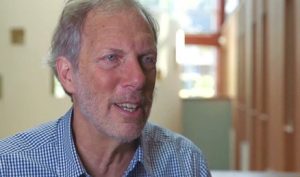
Robert Pollin ~ Photo: UMass Amherst
06-27-2024 ~ Progressive economist Robert Pollin weighs in on “Bidenomics” and the economic policies of Trump’s administration.
The economy is a top issue for many voters ahead of the 2024 presidential election. In a lengthy interview ahead of the first presidential debate between Joe Biden and Donald Trump, world-renowned progressive economist Robert Pollin offers a detailed and thorough assessment of the actual state of the U.S. economy and the effects of Biden’s economic policies. Pollin is a distinguished university professor of economics and co-director of the Political Economy Research Institute (PERI) at the University of Massachusetts Amherst. His books include The Living Wage: Building a Fair Economy; Contours of Descent: U.S. Economic Fractures and the Landscape of Global Austerity; and Back to Full Employment. He has been a consultant to, among other organizations, National Nurses United, the American Postal Workers Union, the Washington State Labor Council, Labor Network for Sustainability and the BlueGreen Alliance.
C. J. Polychroniou: The economy will be one of the key issues in the 2024 U.S. election and may very well determine whether it will be Joe Biden who will be reelected as president or whether we will see Donald Trump return to the White House. As one would reasonably expect, of course, the two primary candidates for the 2024 presidential election have radically different takes on the state of the U.S. economy. Biden recently told NBC’s “TODAY” that “America has the best economy in the world,” while Trump claims that the economy is collapsing. Let’s start by talking about “Bidenomics,” the nickname for Biden’s economics policies and plans. Is Bidenomics a real economic philosophy? If so, what does it encompass?
Robert Pollin: Bidenomics does certainly encompass an overarching framework for dealing with many of the most basic economic problems under U.S. capitalism today, while still, obviously, operating well within the boundaries of the existing capitalist social order.
The starting point for Biden’s economic program is the aggressively pro-Big Business, pro-Wall Street and pro-rich neoliberal variant of capitalism that has dominated U.S. policy making for the past 45 years, under both Democratic as well as Republican administrations. Biden has been pushing out of this neoliberal straightjacket through initiatives that support working people, unions, a viable climate stabilization project and public sector-led economic development initiatives more generally. Of course, Biden himself has never been a leftist of any variety. He is a rather career politician and centrist Democrat. But he has allowed his administration to be moved leftward by the Bernie Sanders and Elizabeth Warren presidential campaigns and allied progressive labor unions and social movements throughout the country. These union and progressive groups deserve major credit for this accomplishment. Read more
Air Pollution Is Killing Millions And Rising Exponentially—A Shift In Agriculture Can Solve It
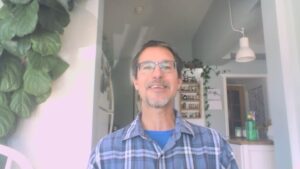
Jimmy Videle ~ Source: YouTube
06-27-2024 ~ We must find a better way to prevent land use from changing.
In 1958, geochemist Charles David Keeling set up the Mauna Loa Global Monitoring Laboratory in Hawaii, which measured carbon dioxide (CO2). Keeling believed that CO2 levels were rising and wanted to prove it. Mauna Loa was a perfect location to obtain precise readings since it was located at an elevation of more than 13,000 feet in the middle of the Pacific Ocean. By 1959, the level of CO2 was 316 parts per million volume (ppmV). Since then, the curve has seen an exponential rise. As of May 2024, the amount of CO2 in the atmosphere had risen to more than 426 ppmV.
It has been more than 4 million years since CO2 levels were as high as today. “[The] CO2 levels are now comparable to the Pliocene Climatic Optimum, between 4.1 and 4.5 million years ago, when they were close to, or above 400 ppm. During that time, sea levels were between 5 and 25 meters higher than today, high enough to drown many of the world’s largest modern cities,” stated a report by the National Oceanic and Atmospheric Administration.
These pollution levels are undoubtedly human-caused and have primarily resulted from burning fossil fuels, deforestation, and land-use change by industrial agriculture. In designing our society from an anthropocentric point of view (prioritizing humans above all other species), we have not only neglected but also harmed the Earth’s natural systems. To maintain a sustainable environment, we must adopt an eco-centric point of view that prioritizes the intrinsic value of all living things and preserves the ecological balance.
The Perfect Balance
Carbon dioxide gives our planet life. All living plants need it, converting it into an energy source. They assimilate carbon and expel the oxygen that all faunal beings require. When humans and animals breathe in oxygen, they exhale carbon dioxide, a greenhouse gas (GHG) that traps heat. Other gases that heat the atmosphere include methane (CH4) and nitrous oxide (N2O). Read more
New World, New Hope: The Struggle For A Free Western Sahara Continues
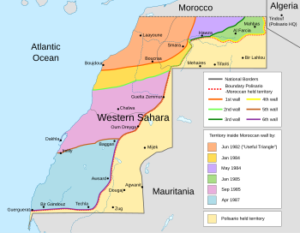
Western Sahara – Map: en.wikipedia.org
06-27-2024 ~ The Sahrawi freedom movement Polisario continues the armed struggle against Morocco, which uses Israeli spyware and lures the West with trade opportunities to turn a blind eye to the occupation of Western Sahara. Many Sahrawis see new hope in a new multipolar world order that is not dominated by the United States and the West.
Life under occupation is a constant struggle. This is continually expressed at the international media conference in a refugee camp in Western Sahara. The conference takes place from May 1–5 and is organized by the Sahrawi Union of Journalists and Writers (UPES).
Western Sahara is occupied by Morocco, a country where King Muhammad VI has full control over Morocco’s armed forces, judiciary, and all foreign policy.
In Western Sahara, the Moroccan monarchy violates the human rights of the Sahrawi people. Children suffer from malnutrition, journalists are thrown in prison, and international observers are denied access to the occupied territories.
Morocco’s colonization of Western Sahara has been going on since 1975; however, the occupation receives little attention from the international community. Through the occupation, Morocco offers trade opportunities to Western companies while the Moroccan intelligence service uses Israeli spyware to monitor the Sahrawis.
But the revolutionary Sahrawi freedom movement—Polisario Front—is not giving up: In 2020, Polisario resumed its armed struggle against Morocco. The Sahrawis hope that a new world order, not dominated by the West, will open up new possibilities in the fight for a free and independent Western Sahara.
Occupied Land
The media conference takes place in Wilayah of Bojador, one of five Sahrawi refugee camps located in Algeria on the border with Western Sahara. Algeria has given the area to Polisario, which administers the refugee camps.
Thus, you could say that Western Sahara is divided into three areas. There are the occupied territories of Western Sahara, where Morocco is in power. There are the liberated areas of Western Sahara, where Polisario is in power. And then there are the refugee camps in Algeria, where Polisario is also in power. Read more
Trix van Bennekom ~ Halte Hausdorff
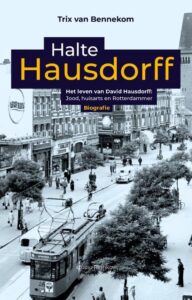 06-24-2024 ~ Het leven van David Hausdorff. Jood, huisarts en Rotterdammer.
06-24-2024 ~ Het leven van David Hausdorff. Jood, huisarts en Rotterdammer.
‘Sint-Petersburg, zondagmiddag 13 maart 1881’. Dat Trix van Bennekom de biografie van David Hausdorff begint met deze regel, illustreert haar aanpak. Een aanpak die we kennen van haar boek Abraham. Kroniek van een politieke dynastie (2018). De combinatie van een persoonlijke geschiedenis en de grote geschiedenis levert ook nu weer een bijzonder boek op.
Op die dertiende maart in 1881 kwam tsaar Alexander II bij een aanslag om het leven. Al kwamen de daders uit een revolutionaire groepering, de Nihilisten, de Joodse gemeenschap in Rusland kreeg de schuld. Drie jaar lang werden Russische Joden door volksmassa’s mishandeld en vermoord. De eerste grote pogroms in de moderne tijd.
Vanuit Rusland en aangrenzende gebieden kwam een grote stroom vluchtelingen op gang. De meeste vluchtelingen wilden naar Amerika.
Rotterdam kreeg de bijnaam ‘Warschau aan de Maas’, zo veel mensen kwamen vanuit het Oosten in de hoop in te kunnen schepen naar het Gouden Land.
Tussen 1818 en 1914 verhuisden 2,5 miljoen Joden uit Oost-Europa naar de Verenigde Staten.
Ook een deel van de familie Hausdorff, woonachtig in Polen, dicht bij de Russische grens, besloot naar het Westen te gaan. Het geweld kwam steeds dichterbij.
Na eerst in Duitsland gewoond te hebben, gingen twee zonen Hausdorff in 1883 naar Rotterdam. Daar wordt op 2 november 1901 David Hausdorff geboren.
Het is verleidelijk om maar te blijven vertellen over geschiedenis die de achtergrond vormt voor het verhaal over deze huisarts. En dan moet je nog beginnen aan de verhalen over de Joodse gemeenschap in Rotterdam voor de oorlog, over de oorlogsjaren, over de onderduik van het gezin Hausdorff vanaf 1943, over de wederopbouw van diezelfde Joodse gemeenschap na de oorlog.
Wil je aan de hand van een citaat laten zien hoe Van Bennekom in één alinea de stemming in de Joodse gemeenschap vlak na de oorlog weet samen te vatten:
‘De Duitse bezetter had in Nederland niet alleen meer dan 100.000 Joden de dood ingejaagd, ook het eeuwenoude Joodse leven was weggevaagd. Synagogen, ziekenhuizen, scholen, weeshuizen, bejaardenhuizen, bedrijven, woonhuizen, winkels; alles was in beslaggenomen en geplunderd, religieuze, sociale en culturele organisaties waren opgeheven. Waar te beginnen? En had het nog wel zin de Joodse gemeenschap opnieuw op te bouwen? De anti-Joodse stemming die in de eerste maanden na de bevrijding in Nederland heerste, deed het ergste vrezen voor de toekomst: zouden Joden niet altijd tweederangsburgers blijven?’
Maar verstandiger is het om nu maar gewoon te stoppen en te zeggen: lezen!
Studio Rashkov, Rotterdam, 2024
ISBN 9789083320434


